
USSC Page 1851224C
UNITED STATES STOVE COMPANY
227 Industrial Park Road
P.O. Box 151
South Pittsburg, TN 37380
All installations must be made in accordance with local and state codes
which may differ from this manual.
Wood & Coal Burning Furnace
Owners Manual
Models: 24AF, 24AG, 24AZ
TESTED TO UL 391
R
US

Page 2 USSC
CHIMNEY INSTALLATION
Your new furnace must be installed into a "Class A" Chimney only.
This type of chimney consists of a flue lined brick chimney, or an
approved "Class A" all fuel factory built (prefabricated) type. Any
other installation guarantees an immediate fire hazard.
Do not install the furnace into the same chimney serving other appli-
ances.
When using 8" flue pipe, the chimney should have an 8" to 10" round
flue liner or 9"x9" square liner.
The chimney should have a minimum height of 3' from the top of the
chimney to the point at which it passes through the roof.
The top of the chimney must be at least 2' higher than the peak or the
highest portion of the roof within 10' horizontally.
A chimney that rises within the house is better insulated than a chim-
ney that is located outside the house and exposed to the weather, the
north side of the house is the worst position.
Check manual for proper installation of flue pipe into chimney.
FURNACE INSTALLATION
Install your furnace as close to the chimney as possible with a minimum
of elbows, no more than two and a flue pipe run of no more than 6 feet
horizontally. Also, the flue pipe should contain a 1/2" rise per foot and
NEVER be installed closer than 18" from combustibles.
WOOD BURNING: Install a manual flue pipe draft damper at a safe,
convenient location between your furnace and chimney.
COAL BURNING: Install a barometric damper set at .05 Water Column.
AIR FLOW: Solid Fuel furnaces produce much hotter air than oil or gas
fired appliances so all clearances are mandatory.
AIR DUCT INSTALLATION: This furnace provides a 12" round (113 sq.
in.) opening, because of efficiency and general convenience.
United States Stove Company recommends a Parallel Furnace Installa-
tion with direct (ducted) feed or return air to your furnace. NOTE:
Cold air duct intake must be at least 25% larger than hot air duct
outlet.
FURNACE ASSEMBLY
U.S. Stove provides easy step by step pictures, therefore, the fur-
nace assembly procedure should be understandable.
FIRING YOUR FURNACE
Start on a conservative basis. Your new furnace, when properly fired
with hard dry wood will achieve approximately 6 to 8 hours of burn time
per load of wood, much longer with coal. If the furnace is being fired
hot constantly with full flames and only provides a 3 hour burn cycle,
the furnace is being overfired. Possibly your heating requirements are
too much for the size of furnace purchased. Certainly allowing your
existing furnace to assist in extremely cold weather is no crime. Re-
member, your furnace can be damaged if fired continually at extremely
high temperatures and this procedure will void your warranty.
CAUTION: OVERFIRING YOUR
FURNACE VOIDS WARRANTY.
OVER FIRING
This generally occurs when the following procedures are not fol-
lowed, ash door is open (even partially open), the feed door pressure
relief flap is open, the feed door is open or the manual draft spinner
is open. Open the ash and feed doors only when in attendance,
never leave the furnace unattended when doors are open. This
furnace has an automatic draft fan so use the manual draft with a
specific purpose. Also, an overfilled ash drawer can cause grate
warpage, keep ash drawer clean. Don't use furnace if distribution
fan isn't functioning properly, and keep air filter clean. Draft fan
opening should be set at 1/2" open as a point of start, depending on
condition of fuel.
U. S. Stove recommends a very active fire at all times for
maximum results, but only as instructed.
SOME HELPFUL HINTS
•Your furnace will hold logs approximately 2" shorter than the length
of the firebox. Don't force in oversized logs.
•Unsplit, dry logs will provide longer burn time than split logs.
•Don't ever try to burn trash or garbage.
•Keep flue pipe stack temperature between 300 and 400 degrees.
This will reduce creosote build-up. A magnetic surface thermometer
can be obtained from your dealer.
•Weather is the most important determinant in how you operate your
furnace (assuming you have dry wood).
•The colder it is the stronger the draft, warm weather reduces draft.
Set your draft fan rheostat and manual draft accordingly.
•Open manual smoke damper only when starting the fire and when
chimney draft is marginal.
•Always place logs so air can flow between them.
•Shake gently (up to 10 o'clock down to 8 o'clock) don't try to loose
weight shaking down ashes!
•Wood ash is useful as a fertilizer because it contains potassium,
ashes also decrease the acidity of the soil. Coal ashes will provide
good traction on ice or snow, otherwise they are useless.
•Always store ashes in a metal container with a lid.
•Ashes are a good thermal insulator and will keep enough oxygen
away so embers will not burn out.
•Never, never let ashes accumulate up to grate level, this will greatly
reduce the life span of your grate.
•Coal produces much more ash than wood.
•Keep your chimney and flue pipe clean, check monthly.
•Smoke detectors and fire extinguishers should always be a part of
your equipment.
•Never use chemicals or fluids such as gasoline, charcoal lighter, drain
oil or kerosene to light a fire.
•Oil the air fan motors yearly. They do not contain bearings, sleeves
with felt. Therefore keeping fan air clean is more important than
oiling.
•Turn on your regular furnace once every month to keep it tuned up.
•Always shut the furnace down gradually to prevent excessive stress
on steel.
WARPAGE OF STEEL IS COMMON, AGGRESSIVE BUT GENTLE
FIRING CAN MINIMIZE WARPAGE.
•There is no substitute for dry hard wood. Wood requires 6 months
to a year to air dry to 25% moisture content or less.
•Don't throw heavy, wet wood into your Jensen, it could crack the
firebox and bricks.
•Treat your furnace with the proper respect and it will reward you
with much comfort, and a lifetime of central heat.

USSC Page 3
Welcome...
...to the world of solid fuel heating! Your new furnace has been designed and built
with a high grade of materials and the strictest regard to quality.
Before you start installing your new furnace, take the time to read these installation
and operating instructions. We have prepared them for your benefit to save time and
provide some helpful knowledge on wood and coal burning.
Save the instructions for future use. It won't take long for you to realize the benefit of
solid fuel heating, however, maintenance is the key to a long lasting relationship with
your new furnace. These instructions can help you now as well as in the future.
Note: This owners manual is provided for Forced Air add on furnaces. United States
Stove Company is constantly developing and improving its product line, therefore, we
reserve the right to change specifications without notice.
General Rules ..............................................................................................................................................................................4
How It Works ...............................................................................................................................................................................5
Parts List .................................................................................................................................................................................. 6-7
Installation Instructions ........................................................................................................................................................ 8-11
Assembly ..............................................................................................................................................................................12-16
Accessories ................................................................................................................................................................................17
Wiring ...................................................................................................................................................................................18-23
Trouble Shooting .......................................................................................................................................................................24
Notes ....................................................................................................................................................................................25-26
Warranty ....................................................................................................................................................................................27
How To Order Repair Parts ......................................................................................................................................................28
Table Of Contents

Page 4 USSC
General Rules
Rules for the Safe Installation and Operation of Your
Furnace...
Check local codes, the installation must comply with strict
conformance in regard to clearances.
The Furnace must be installed on a noncombustible floor.
Connect the furnace to tile lined inside masonry chimney or
approved insulated all fuel prefabricated chimney only.
Keep smoke pipe connection as short as possible, using a
minimum 24 gauge pipe with a minimum 1/2" per foot rise
from the flue collar to the chimney opening.
Be sure there is a sufficient supply of combustion
air to the area where the furnace is to be located.
Do not over draft the furnace! It is designed to operate at
.04 to .06 inches of water column and must be set with a
draft gauge to maintain a steady draft.
Do not use flammable liquids for starting a fire.
Do not store fuel or combustibles near the furnace. Some
areas of the furnace are hot and could cause an explosion
and possible bodily or property damage.
Store all ashes in a metal container with a tight sealing lid
and allow ashes to cool before disposing of them, possibly
a week.
Familiarize yourself with the furnace's solid fuel burning
characteristics before leaving unit unattended for long pe-
riods of time.
The loading door and ash door must be tightly closed dur-
ing furnace operation to insure safety and efficiency.
CAUTION -
The furnace has hot surfaces. Keep Children Away.
Do not touch during operation.
The furnace is designed to burn air dried wood and coal at
a predetermined firing rate. Over firing could result in dam-
age to the heat exchanger and cause dangerous opera-
tion. Over firing occurs when the ash door is left open
during operation or a highly volatile fuel, such as large
amounts of small kindling, is used. Note: This action voids
all warranty.
Follow a regular service and maintenance schedule of the
furnace and chimney for efficient and safe operation.
Do not leave the ash door open when the fire is burning.
Do not let ashes build up closer than 2" to the grate.
With new steel, there is a small amount of oil or dirt on the
metal. You may smell an odor. This is normal during the
first operation. You should assemble the furnace out of
doors and build a small fire in it to "burn off" this dirt and
oil before installing the unit.
During the first few fires, heat may slightly warp
the front and back panels. This is normal and will
not hamper your unit's operation.
DO NOT CONNECT THIS UNIT TO A CHIMNEY FLUE SERV-
ING ANOTHER APPLIANCE.
BURN WOOD OR COAL ONLY IN MODEL 24AF. DO NOT
MIX OTHER THAN THE USE OF WOOD TO START A COAL
FIRE.
DANGER - Risk of Fire or Explosion: Do not burn gar-
bage, gasoline, drain oil or other flammable liquids.
WARNING - Risk of Fire:
Do not operate with flue draft exceeding 6 inches
water column.
Do not operate with fuel loading or ash removal
doors open.
Do not store fuel or other combustible material
within marked installation clearances.
Inspect and clean flues and chimney regularly.
In the event of a chimney fire call the fire depart-
ment, then be sure the furnace doors are closed
tightly and the power to the unit is turned off.
This Furnace Must Be Installed By A Qualified Installer.

USSC Page 5
How...
How Your New Furnace Works
Unlike conventional heating (gas, oil, electric), wood or coal
heating requires more user attention. Your furnace, with
its automatic combustion air blower, alleviates the constant
need for adjusting the burning rate common to other units
on the market. The fire, however, must be started and
subsequent fuel added by the user.
Conventional heating system produce heat only when the
thermostat calls for heat. This way of heating is inefficient
and often leaves part of the home either too hot or too
cold. Your furnace is designed to deliver heat as long as
there is a fire in it. The fire intensity is regulated by the
room thermostat, high or low, the fire continues to pro-
duce heat. This heat is continuously distributed throughout
the home by a distribution blower. This constant supply of
heat is uniform and prevents drafts.
WARNING
Note: Improper firing. Wood or coal over firing oc-
curs when the ash door is left open during operation
or a highly volatile fuel is used. Coal that exceeds the
fire brick line will cause overfiring...this type of op-
eration will immediately void any warranty.

Page 6 USSC
Parts
FOR MODEL(S): 24AF
1
23
4 8 26 22
6
7
27
5
9
10
11
27
14
13
16
31
29
26
33
35
15
12
30 32
34
19
20
18
17
39
37
36
2521
24
23
28
38

USSC Page 7
Parts
KEY PART # DESCRIPTION QTY.
1 69072 FIREBOX WELDMENT 1
2 C97999 WATER COIL COVER GASKET 1
3 24220 INSIDE COVER PLATE 1
N/S C23799 12 x 3/4" TEKS SCREW 3
N/S 83236 1/4-20 x 3/4" HX SCREW 4
4 25085 FEED DOOR 1
N/S 88033 3/8" ROPE GASKET (FEED DOOR) 4.25 FT.
N/S C21390 7/32 x 1 ROLL PIN (FEED DOOR) 2
5 24482 PRESSURE FLAP 1
N/S 88075 3/4 FLAT ROPE GASKET 1 FT.
N/S C21390 7/32 x 1 ROLL PIN (PRESSURE FLAP) 2
6 69077 FEED DOOR HANDLE ASSY. 1
7 83379 1/4-20 x 1 BOLT 1
8 83261 1/4-20 LOCK NUT 1
9 24485 ASH DOOR 1
N/S 88033 3/8 ROPE GASKET 2.29 FT.
10 24486 ASH DOOR HANDLE 1
N/S C21390 7/32 x 1 ROLL PIN (ASH DOOR) 2
11 83379 1/4-20 x 1 BOLT 1
12 83261 1/4-20 LOCK NUT 1
13 24382 SPIN DAMPER 1
14 83471 5/16-18 x 1-3/4" CARR. BOLT 1
15 83423 5/16-18 HEX LOCK NUT 1
16 69068 ASH DRAWER ASSY. 1
17 24501 SMOKE CURTAIN 1
18 83445 1/4-20 x 1-1/4" BOLT 2
19 83261 1/4-20 LOCK NUT 2
20 23787 SMOKE DOOR CLIP 2
21 89799 STUB COLLAR 1
22 24528 DAMPER ROD 1
N/S 83874 1/8 DIA. x 1-1/2" COTTER PIN 1
23 69080 CONTROL CENTER 1
24 69097 FORCED DRAFT BLOWER ASSY. 1
25 80129 THERMOSTAT 1
26 89574 SPRING HANDLE (DAMPER ROD, SHAKER) 2
27 89849 HOOK SPRING HANDLE (FEED, ASH DOOR) 2
28 69082 JUNCTION BOX ASSY. 1
29 69069 SHAKER GRATE HANDLE 1
30 40369 SHAKER GRATE FRAME 2
31 40349 SHAKER GRATE 2
32 40366 FIREBOX LINER 2
33 24496 FRONT HEAT PLATE 1
34 24487 FURNACE HEAT PLATE 1
35 89066 FIREBRICK 10
36 24488 CABINET TOP 1
37 24489 CABINET RIGHT SIDE 1
38 24490 CABINET LEFT SIDE 1
39 C60456 1050 CFM DISTRIBUTION BLOWER 1
N/S = NOT SHOWN
FOR MODEL(S): 24AF

Page 8 USSC
Parts
FOR MODEL(S): 24AG, 24AZ
1
23
4826
22
6
7
27
5
9
10
11
27
14
13
16
31
29
26
33
35
15
12
30 32
34
19
20
1817
45
37
36
2521
24
23
28
38
40
39
41
434244

USSC Page 9
KEY PART # DESCRIPTION QTY.
1 69315 FIREBOX WELDMENT 1
2 C97999 WATER COIL COVER GASKET 1
3 2 4 22 0 INSIDE COVER PLATE 1
N/S C23799 12 x 3/4" TEKS SCREW 3
N/S 83236 1/4-20 x 3/4" HX SCREW 4
4 25 08 5 FEED DOOR 1
N/S 88033 3/8" ROPE GASKET (FEED DOOR) 4.25 FT.
N/S C21390 7/32 x 1 ROLL PIN (FEED DOOR) 2
5 24482 PRESSURE FLAP 1
N/S 8 80 75 3/4 FLAT ROPE GASKET 1 FT.
N/S C21390 7/32 x 1 ROLL PIN (PRESSURE FLAP) 2
6 69326B FEED DOOR HANDLE ASSY. 1
7 83379 1/4-20 x 1 BOLT 1
8 83261 1/4-20 LOCK NUT 1
9 2 4 4 8 5 ASH DOOR 1
N/S 8 803 3 3/8 ROPE GASKET 2.29 FT.
10 25047B ASH DOOR HANDLE 1
N/S C21390 7/32 x 1 ROLL PIN (ASH DOOR) 2
11 83379 1/4-20 x 1 BOLT 1
1 2 832 61 1/4-20 LOCK NUT 1
1 3 2 4 3 8 2 SPIN DAMPER 1
14 83471 5/16-18 x 1-3/4" CARR. BOLT 1
1 5 8 342 3 5/16-18 HEX LOCK NUT 1
1 6 6 90 68 ASH DRAWER ASSY. 1
1 7 24501 SMOKE CURTAIN 1
18 83445 1/4-20 x 1-1/4" BOLT 2
1 9 8 326 1 1/4-20 LOCK NUT 2
2 0 2 37 87 SMOKE DOOR CLIP 2
2 1 8 9 7 9 9 STUB COLLAR 1
2 2 2452 8 DAMPER ROD 1
N/S 83874 1/8 DIA. x 1-1/2" COTTER PIN 1
23 69321G CONTROL CENTER 1
* * 6 93 23 CONTROL CENTER (STAINLESS STEEL) 1
2 4 69 09 7 FORCED DRAFT BLOWER ASSY. 1
2 5 8 0 1 2 9 THERMOSTAT 1
26 8 9 5 74 SPRING HANDLE (DAMPER ROD, SHAKER) 2
2 7 8 98 49 HOOK SPRING HANDLE (FEED, ASH DOOR) 2
2 8 69 082 JUNCTION BOX ASSY. 1
2 9 69 069 SHAKER GRATE HANDLE 1
3 0 4 036 9 SHAKER GRATE FRAME 2
3 1 40349 SHAKER GRATE 2
3 2 4 03 66 FIREBOX LINER 2
3 3 24496 FRONT HEAT PLATE 1
3 4 24487 FURNACE HEAT PLATE 1
35 89066 FIREBRICK 10
36 25014G CABINET TOP 1
* * 2 50 15 CABINET TOP (STAINLESS STEEL) 1
37 25016G CABINET RIGHT SIDE 1
* * 25 017 CABINET RIGHT SIDE (STAINLESS STEEL) 1
38 25018G CABINET LEFT SIDE 1
* * 25 019 CABINET LEFT SIDE (STAINLESS STEEL) 1
39 25025B SIDE FILLER 2
40 25020G BOTTOM FRONT 1
* * 2 50 21 BOTTOM FRONT (STAINLESS STEEL) 1
41 891049 CATCH 2
N/S 891048 BALL STRIKE 2
42 25022G CABINET DOOR 1
* * 2 502 3 CABINET DOOR (STAINLESS STEEL) 1
N/S 69318B TOP CABINET DOOR HINGE 1
N/S 69319B TOP CABINET DOOR HINGE 1
N/S 851405 ASHLEY SCRIPT LOGO 1
43 25024B LINER, CABINET DOOR 1
4 4 89 943 DOOR KNOB 1
45 C60456 1050 CFM DISTRIBUTION BLOWER 1
Parts
N/S = NOT SHOWN ** = USED ON 24AZ
FOR MODEL(S): 24AG, 24AZ

Page 10 USSC
Installation
Furnace location
Before you start!
It is very important you check with your dealer, local fire
department, or building inspector. They will be able to in-
form you of any state or local codes pertaining to the loca-
tion and installation of your furnace.
The ideal location for your furnace is centrally located in
the basement. This allows for an even heat distribution by
having all the duct work approximately the same length.
Ideal locations cannot always be used for one reason or
another, therefore, let's look at some alternatives.
If your home does not have a basement, but a utility room
or garage, make sure there is enough space to maintain
the required clearances stated on the label located on the
furnace. Also, read about combustion air.
INSTALLATION #1
With this installation, a back draft damper (optional) is in-
serted into the heat run before the plenum of the existing
furnace to prevent air from the existing furnace to blow
back into the furnace when it is not in use. When a back
damper is employed, it should be located as close to the
existing furnace plenum as practical.
Chimney location is also critical. The furnace must be
placed as close as possible to the chimney. You want the
chimney connector (smoke pipe) to have a minimum of
elbows, two (2) or less. Also, the chimney connector should
not have to run more than six (6) feet to the chimney.
CAUTION: The warm-air supply outlet of the Fur-
nace should not be connected to the cold-air re-
turn inlet of the central furnace because a possibil-
ity exists of components of the central furnace over-
heating and causing the central furnace to operate
other than as intended.
After installation, be sure the measured external static pres-
sure of the central and Furnace is not greater than those
marked on the nameplates.
INSTALLATION #2
Extending the hot air duct from the furnace into the exist-
ing plenum will help direct the flow of air from the furnace
as well as the flow in the existing furnace. Ducting enter-
ing the existing plenum at an angle (approximately 45 de-
grees) will facilitate air flow from the furnace while divert-
ing air from the existing furnace.
INSTALLATION #3
The baffle on this system should be made the full width of
the furnace plenum in order to properly direct the air into
the distribution ducts.
(Optional)
Back Draft
Damper
Furnace
Existing
Furnace
Furnace
Existing
Furnace
Baffle
Furnace
Existing
Furnace

USSC Page 11
Your furnace is designed to be added on to existing duct
work and operate either with or without another heat source
such as a gas furnace. The following diagrams illustrate
acceptable ways of ducting your furnace.
Clearance to Combustible Materials
Your Furnace has been tested to determine the SAFE clear-
ances to combustible material. The clearances are printed
on the label located on the back of the furnace. The chart
on this page also states these minimum clearances. Make
sure you follow these when choosing your furnace loca-
tion.
Any hot air plenum connection to a furnace must be con-
structed of metal.
NOTE: INSTALL ONLY ON A NON-COMBUSTIBLE FLOOR.
Clearance to Combustibles
Furnace to back wall 30"
Furnace to side wall 12"
Pipe to back wall 18"
Pipe to side wall 18"
Furnace to ceiling 30"
Ductwork to ceiling 18-6-1"
PLENUM
18"
18"
6"
1"
3'
3'
30"
18"
18"
12"
12"
6"
To connect a Solid Fuel Furnace to a chimney flue
pipe serving another appliance, it's suggested you check
local building codes.
SOLID FUEL
FURNACE
EXISTING
FURNACE
EXISTING
FURNACE

Page 12 USSC
FLUE RECOMMENDATIONS
WHAT SIZE CHIMNEY SHOULD BE
USED?
The Chimney size to use is either six (6)
or (8) inch round or an 8 x 8" square. If
you use a rectangular chimney, the mini-
mum area it may be is 39 square inches.
"Class A" chimneys are those made from
tile-lined masonry (brick or block) or an
independent laboratory approved all-
fuel factory-built chimney.
CAUTION!
Only a "Class A", all-fuel chimney in-
tended for use with solid fuel should be
used.
Chimney experts have determined that
the flue termination should be at least 2'
above the highest portion of the roof that
is within a 10' radius.
The flue termination should be at
least 3' above the roof line.
The termination cap should be
designed to inhibit downdrafting
without restricting the exhaust
discharge.

USSC Page 13
CONNECTING STOVE PIPE TO A
METAL CHIMNEY
When using a metal chimney, part of the installation pack-
age should include a stove pipe connector. Follow the in-
structions provided with the chimney and its parts.
CHIMNEY DRAFT REGULATORS
(OPTIONAL) BAROMETRIC DAMPER
These devices are used to help maintain adequate chimney
draft automatically. They should be installed according to
their instructions and set at .04 to .06 inches of water
column.
MANUAL DAMPER
(RECOMMENDED FOR ADDED SAFETY)
These are used to control chimney draft manually and should
be installed in a convenient place between furnace and
chimney. In the event of a chimney fire, it should be closed
reducing air to the chimney fire.
A combination of both barometric damper and manual
damper may be used. If this is the case, install the manual
damper between the barometric damper and the chimney.
VENTILATION FOR YOUR FURNACE
There are many appliances which require "make up" air to
operate. However, with a combustion air draft fan, "make-
up" air is not usually necessary with your wood furnace.
If your home is sealed exceptionally well, use a 3" or 4"
diameter duct vented to the outside and terminating in the
vicinity of the combustion air draft fan. Also, it is possible
for your fans to draw in furnace smoke if there is only dead
air in the area. Note: It's highly recommended that a cold
air return system be utilized. Simply attach a 14" round to
a filter box adapter and attach to cold air return. Also, a
cold air return increases motor life.
FACTORY-BUILT OR METAL CHIMNEYS
If your home has an existing metal chimney, the same rules
apply as with masonry chimneys. One thing to be espe-
cially aware of is that "Class B" chimneys are for gas appli-
ances only, not solid fuel burners. If purchasing a new
package, consult with the dealer. He will provide the nec-
essary parts and instructions for installation.
INSTALLING A NEW CHIMNEY
When installing a new chimney, whether it be masonry or
metal, if possible, it is recommended that it is placed within
the house structure. These chimneys remain warmer and,
in turn, radiate this warmth into the house. A chimney
located outside the house is exposed to cold temperatures
which encourages creosote build-up and poor chimney draft.
CHIMNEY INSTALLATION
With the chimney being the most important part to your
installation, great care should be given to its design.
MASONRY CHIMNEYS
If your intention is to use an existing masonry chimney,
check first with your local building official to see if this is
acceptable.
An older chimney, in need of repair, is the GREATEST
fire hazard in any installation.
STOVE PIPE (FLUE PIPE) CONNECTION
The flue pipe you should use is 6" or 8" 24 gauge or heavier
steel pipe.
When installing the flue pipe, make sure all joints are se-
cured with at least three (3) sheet metal screws. This
includes the connection to the flue collar of the furnace.
For added protection, use some high temperature furnace
cement to seal each joint.
The stove pipe should slope upward to the chimney at a
rate of 1/2 inch per foot. Any horizontal runs of stove pipe
should not exceed six (6) feet and it should be supported
every four (4) feet. Note: Flue pipe should be attached
inside the flue pipe collar to prevent creosote from running
down onto electrical motors.
CONNECTION OF FLUE PIPE TO
A MASONRY CHIMNEY
When connecting flue pipe to a masonry chimney, there
are two ways to go:
1. The flue pipe itself can be cemented into the chim
ney or;
2. A thimble can be used which is cemented into the
chimney, and the flue pipe fits into the thimble.
In each case, care must be taken. The outer masonry
(brick or block) must be chipped away, and the inner liner
must be pierced. The flue pipe or thimble is then inserted
flush to the inside face of the tile liner. NOT ANY FURTHER!
Use furnace cement or mortar to seal this connection. When
connecting the flue pipe, make sure the attachment is se-
cure enough so down draft or "puffs" do not dislodge it.

Page 14 USSC
NOTE: Your furnace may come partially pre-assembled, but in the case that it is not, follow the instruc-
tions below.
Prior to assembling, place the unit in the general vicinity of the installation. This should help minimize handling damage
to the unit after assembly. Note: If your basement can't handle a height of 7' 8" you must lay the furnace on two, 2 x 4's
to slide shrouds onto weldment. Then stand furnace up.
1. Unit side shrouds can be assemble by slipping the side
shrouds into place from the top down. If they don't
slide easily, open up the lip of the sides with a large
screw driver then add a little oil. Sometimes a slight
tapping with a block of wood and hammer may be re-
quired, but do not force. When properly installed, the
electrical knock-outs will be at the top left side. NOTE:
Should you wish to install a domestic hot water coil, it
should be secured to the right side prior to assembly.
Also, the rear cast iron baffle must be fastened prior to
shroud installation.
NOTE: The furnace is partially prewired all that is re-
quired is the wiring of the distribution fan (see wiring
diagram, page 18) and the wiring to wall the thermo-
stat.
4. After mounting the two (2) fans proceed to the fan
control center.
NOTE: The best maintenance for fan motors is to keep
them clean (exceptionally clean). Oiling with 20W N.
detergent once a season will also help, but cleanliness
is what prolongs motors life. (Two (2) drops on the
draft blade, four (4) drops in the distribution fan.)
Attaching the distribution fan. First, remove the four
(4) bolts from the rear of the unit. Secondly, slide the
distribution fan up to the rear of the furnace, line up
the (4) holes and reattach the bolts and tighten se-
curely.
2.
Attach the draft fan to the back of the weld on the
throat (2" throat hole with 3 mounting holes). It's best
to use the self tapping screws without the draft fan to
establish threads then mount blower. The electrical
box on the blower should be facing downward. Draft
fan air intake cover should be set at a 20% opening,
about 1/2" opening.
3.
DISTRIBUTION FAN
REAR OF FURNACE
DISTRIBUTION FAN
DRAFT FAN

USSC Page 15
6. Attach low voltage thermostat No. 18 up to 30 ft. run
No. 16 to 15ft. Run (purchase locally) to terminal plate,
screws identified with letters G & R. (Generally top
row center, bottom row right). Snake wire through
holes in top of box. Replace outer covers & control
knob. Under no circumstances should you attempt to
plug in main power cord until all wiring and covers are
in place. NOTE: A ground power cord plug is pro-
vided; however, local codes may require fuse box
mounting.
8. Install top shroud (if removed) by simply placing shroud
on to the top of unit, push down, check each corner for
snug fit.
Attaching furnace control center box. To separate outer
cover, remove two (2) side screws and pull off black
rheostat knob. Attach box to left side (facing feed door)
with four (4) self-threading screws. One screw in
each corner. (NOTE: Furnace control center is designed
for left side attachment. Should space prohibit such,
reversing shrouds for right side installation is possible,
however, control wires from box will have to be ex-
tended.)
Next, attach the 4x4 junction box below the control
center box, using (2) self-threading screws provided in
the parts bag. (Two starter holes are provided.)
5a.
5b.
Wall thermostat should be mounted on an upstairs in-
side wall (no outside facing wall) preferably near your
existing thermostat. For more specific information, read
the Honeywell instruction sheet provided with thermo-
stat. Caution: disconnect the power supply before in-
stalling. NOTE: Your wall thermostat and transfer re-
lay are mated Honeywell products for trouble free in-
stallation.
7.

Page 16 USSC
10. Install grate frame (if not already installed): Lay
the first grate frame on the side supports and slide to
the back of the unit. Then install the second grate
frame to the front as shown in the picture above.
12. Installing Firebrick: Place 5 bricks on each side (10
brick total). The bricks tuck under firebox seem.
9. Installing collar to top: To install hot air attaching
collar, simply bend all tabs right angle under shroud.
This may be possible with thumbs, if not, remove top
and use small hammer.
CAUTION: Any hot air plenum connection to a furnace must
be constructed of metal.
Installing Grates: Install grates together, slip shaker
lug into hole and place grates into frame. Grate arch
faces upward. Check out grate rotation by placing
shaker handle on grate lug (3/4"). Grates should ro-
tate freely.
NOTE: Grates are designed to withstand high tempera-
tures, however, should you overfire the furnace you
may fuse or melt grates. This happens if furnace re-
ceives too much air caused by leaving the ash and feed
doors open, draft fan cover wide open, and hot coals
or ashes are excessive in ash pan.
11.

USSC Page 17
13. Installing front and rear cast baffles, heat plates.
NOTE: Grate frames and brick will slide forward and
backward to allow baffle to fit. Install front cast baffle
using two (2) 5/16 bolts, nuts & washers (7/16 wrench
will be needed). Place the side of the baffle that has
the two ribs against the front weld of the firebox. Do
not tighten bolts yet. Place the rear cast baffle to the
back of the firebox but do not attach the bolts at this
time.
14. Now slip the rear heat plate in behind the rear baffle.
Attach heat plate to the firebox by using two (2) 5/16
bolts, nuts & washers. First, line up the top holes and
tighten bolts. Secondly, line up the holes in the rear
baffle and the heat plate with the firebox and attach by
using two (2) 5/16 bolts, nuts & washers. Tighten all
four (4) bolts. NOTE: to reach rear bolts you may find
it easier to put your arm through the flue outlet rather
than to reach through the feed door.
15. Installing smoke damper rod to sliding smoke damper.
First, insert rod through hole above feed door and push
forward.
16. Next working through the flue hole behind furnace, line
up rod between the two posts on the sliding smoke
damper. Then line up the three (3) holes for cotter pin
insertion, this procedure will test your patience. It's
helpful to have a flashlight and another person posi-
tioning the rod.

Page 18 USSC
18. Installing steel smoke shield. Two (2) holes are pro-
vided above each corner of the feed door. Slide the
two (2) bolts, supplied in the parts bag, into the holes.
Next, place the two (2) clips provided onto each bolt
and then attach the two (2) nuts on each bolt. Before
tightening the bolts and nuts securely, slide the smoke
shield up under the clips, lining them with the slots in
the smoke shield. Tighten the (2) bolts and nuts. (NOTE:
The smoke shield should be able to swing back and
forth.) The smoke shield will help prevent smoke back
puffing if you have a lazy flue.
17. Reposition door latches, feed and ash door.
For shipping purposes, door latches are on backwards.
Unfasten 7/16" nuts, reverse and snug fairly tight
(latches must move freely).
19. Attach flue pipe to flue collar. Flue pipe (6") fits inside
furnace flue collar. Finish off with three (3) metal
screws. NOTE: Flue pipe connections flow downward
so creosote can return to furnace for burn up.

USSC Page 19
Accessories
Domestic Hot Water Coil
Part # 11WCK
Filter Box
Part # 24CRM
NOTE: DRAWINGS ARE FOR ILLUSTRATION PURPOSES ONLY. ACTUAL PRODUCTS MAY LOOK DIFFERENTLY.

Page 20 USSC
WIRING DIAGRAM
NOTE: RHEOSTAT IS ADJUSTABLE. IN CASE OF LOW VOLTAGE
TURN COUNTERCLOCKWISE UNTIL BLOWER WILL RUN, BUT
NOT STALL, WHEN POWER IS RETURNED TO UNIT.
RHEOSTAT
PT# 80090
ROOM
THERMOSTAT
YG
W
CR
1
4
COIL
3
6
COIL
2
5
BLUE
BLACK
RELAY
BOTTOM
BLUE
BLACK
RED
ORANGE
(3)
PT# 80390
(LOCATED ON LEFT
OF BOX)
BLACK
(2)
PT# 80388
(LOCATED ON RIGHT
SIDE, TOP)
(1)
PT# 80389
BROWN
(LOCATED ON RIGHT
SIDE, BOTTOM)
ORANGE
BLUE
BLACK
PURPLE
BLACK
PURPLE
BLACK WHITE
WHITE
BLACK
BLUE
BLACK
BLUE
WHITE
ORANGE
PURPLE
GREEN
BLACK
120 VAC
60 Hz
15 AMPS
NOTE: WIRES FROM
DISTRIBUTION FAN
RUN DIRECTLY INTO
THE 4 x 4 JUNCTION
BOX.
DISTRIBUTION
FAN
PT# C60456
DRAFT FAN
PT# 80392
Rotate here
with flat-blade
screwdriver
THERMAL DISC
FAN ADJUSTMENT
DRAFT FAN
(3) HI LIMIT PT# 80390
DE-ENERGIZES WHEN UNIT
REACHES TEMPERATURES OF
APPROX. 170 DEGREES
THERMAL DISC
DISTRIBUTION FAN
(1) HI-SPEED PT# 80389
ENERGIZES WHEN UNIT IS
FIRED AGGRESSIVELY ONLY.
(2) LOW SPEED PT# 80388
ADJUSTABLE IN APPROX.
5 DEGREE STEPS. A LOW
SETTING TURNS BLOWER ON
SOONER.
NOTE:
CAP OFF “RED”
WIRE WITH A
WIRE NUT.
Page is loading ...
Page is loading ...
Page is loading ...
Page is loading ...
Page is loading ...
Page is loading ...
Page is loading ...
Page is loading ...
-
 1
1
-
 2
2
-
 3
3
-
 4
4
-
 5
5
-
 6
6
-
 7
7
-
 8
8
-
 9
9
-
 10
10
-
 11
11
-
 12
12
-
 13
13
-
 14
14
-
 15
15
-
 16
16
-
 17
17
-
 18
18
-
 19
19
-
 20
20
-
 21
21
-
 22
22
-
 23
23
-
 24
24
-
 25
25
-
 26
26
-
 27
27
-
 28
28
United States Stove 24AF User manual
- Category
- Water heaters & boilers
- Type
- User manual
Ask a question and I''ll find the answer in the document
Finding information in a document is now easier with AI
Related papers
-
United States Stove 3000 User manual
-
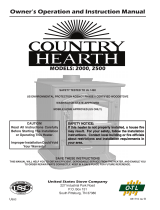 Country Hearth 2000 User manual
Country Hearth 2000 User manual
-
United States Stove 2015 User manual
-
United States Stove CL1660E Owner's manual
-
United States Stove 2015 User manual
-
United States Stove 3000 (L) User manual
-
Breckwell SF747 User manual
-
United States Stove NITED STATES STOV 1602M User manual
-
United States Stove 1600EF User manual
-
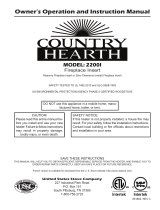 Country Hearth 2200I User manual
Country Hearth 2200I User manual
Other documents
-
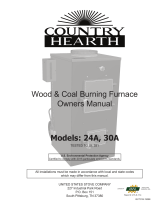 Country Hearth 24A Owner's manual
Country Hearth 24A Owner's manual
-
Broan Blower Baffle for E2 Installation guide
-
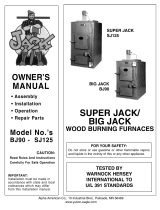 Jack SUPER SJ125 Owner's manual
Jack SUPER SJ125 Owner's manual
-
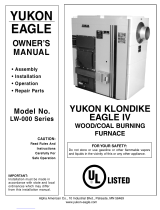 Yukon Eagle LWG-168 Owner's manual
Yukon Eagle LWG-168 Owner's manual
-
Harman Stove Company I User manual
-
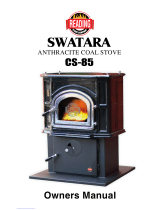 Reading Stove Company Swatara CS-85 Owner's manual
Reading Stove Company Swatara CS-85 Owner's manual
-
US Stove Company 1869 Owner's manual
-
USSC 1869 User guide
-
Ashley 1602R Installation/operator’s User manual
-
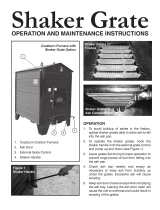 Cozeburn Shaker Grate Series Operation And Maintenance Instructions
Cozeburn Shaker Grate Series Operation And Maintenance Instructions


































